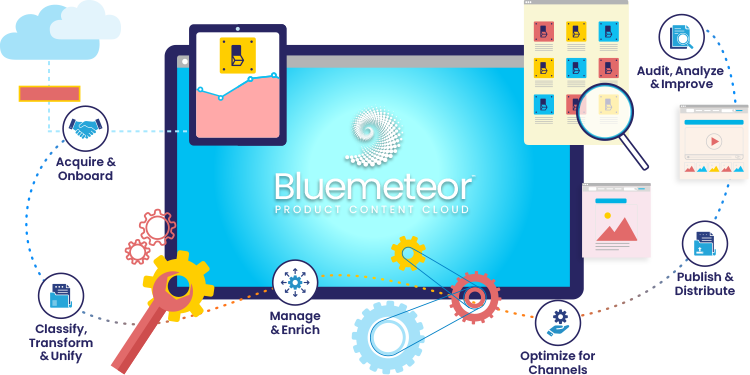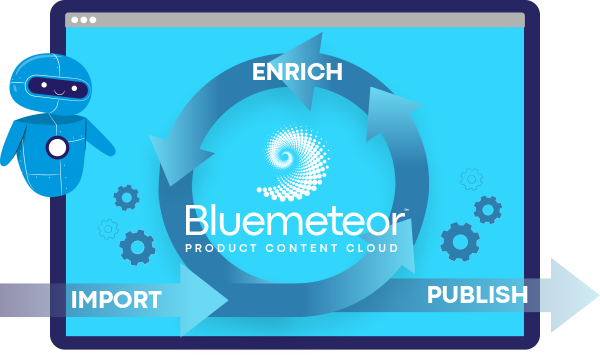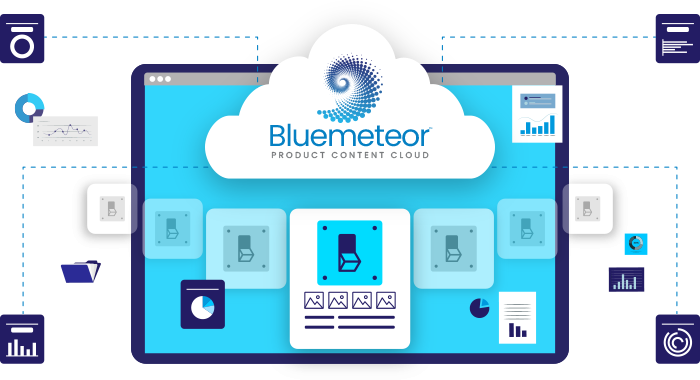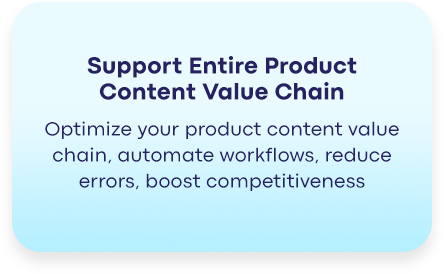What's a PIM and why it's important for your business?
A Product Information Management (PIM) solution is a software platform that centralizes, enriches, standardizes, and distributes product data across sales channels. It helps businesses streamline workflows, enhance data quality, and improve collaboration by providing a single source of truth for product data.
PIM software refers to the actual application you use day-to-day, a PIM system refers to the overall setup including processes and governance, and PIM solutions describe the complete offering that combines software, workflows, and integrations.
PIM helps businesses launch products faster and provide better customer experiences.
What's a PIM and why it's important for your business?
A Product Information Management (PIM) solution is a software platform that centralizes, enriches, standardizes, and distributes product data across sales channels. It helps businesses streamline workflows, enhance data quality, and improve collaboration by providing a single source of truth for product data.
PIM software refers to the actual application you use day-to-day, a PIM system refers to the overall setup including processes and governance, and PIM solutions describe the complete offering that combines software, workflows, and integrations.
PIM helps businesses launch products faster and provide better customer experiences.
Why Do Businesses Need a PIM?
Once you understand what's a PIM, let’s explore why businesses need it. Businesses need a PIM to centralize product data, manage SKUs, standardize information, and streamline catalogue management. This ensures consistent and accurate data across all sales channels, accelerates product launches, improves collaboration, and enhances the overall customer experience.
A PIM solution for enterprises acts as a centralized product hub that brings all product data, attributes, digital assets, and supplier information into one integrated place. With integrated product information management, businesses can:
- Centralize and standardize all product content
- Improve SKU management and reduce duplication
- Streamline catalogue updates and channel syndication
- Maintain consistent and accurate data across eCommerce, ERP, marketplaces, and print
- Accelerate product launches and time-to-market
- Improve collaboration between marketing, merchandising, and IT teams
- Deliver a more reliable, richer customer experience with high-quality product content


Enhance Your Customer Experience
Optimizing the Product Data Value Chain
Efficiently launching a variety of products to market is challenging. Manual processes for managing product information can be cumbersome and error-prone. A moder PIM solution automates and streamlines these processes, making it easier to introduce new products or updates quickly.


Improve Data Quality And Governance
Implementing a PIM (Product Information Management) solution significantly enhances data quality and governance through centralized management, standardized formats, rigorous validation, version control, structured workflows, enrichment capabilities, seamless integration with other systems, and robust audit trails.
Core Features of PIM Software
- Centralized Product Hub: An integrated PIM gives teams one place to store, manage, and control all product data and assets.
- AI-Powered Onboarding: A core part of modern PIM system features, automating supplier data mapping, cleanup, and categorization to cut manual work.
- Data Enrichment Tools: Key PIM software capabilities that enhance product content with ready-to-use attributes, descriptions, and media.
- Quality & Governance Engine: One of the most critical PIM system features, keeping product data complete, consistent, and always channel-ready.
- Multichannel Distribution: A powerful PIM software capability that publishes product content instantly to every sales and internal system.
- Localization Support: An essential integrated PIM function that manages region-specific attributes, translations, and localized content.
- Collaboration Workflows: Built-in PIM system features that bring teams and suppliers together with tasks, approvals, and version control.
- Insights & Analytics: Advanced PIM software capabilities for tracking data quality, readiness, and workflow performance in real time.

Drive success with streamlined product content management with Product Content Cloud
Accelerate Time-To-Market & Item Onboarding
Increase Operational Efficiency
Enhance Data Seamlessly Across Ecosystems
Improve data Quality & Governance
Boost eCommerce Revenue
Lower Total Cost of Ownership
How to Choose the Right PIM
Choosing the right Product Information Management (PIM) system is critical for businesses looking to streamline product data, improve eCommerce performance, and enhance customer experiences. Here’s what to consider:
AI-Powered Data Automation
Manual product data entry and enrichment slows down your business. Look for a PIM that uses AI to automate these tasks suggesting product attributes, cleaning data, and generating descriptions.
Ensure Top-Quality Product Data
High-quality product data is accurate, complete, and reliable across all channels. Your PIM should automatically monitor data quality and enforce standards.
Seamless System Integration
Your PIM should integrate smoothly with ERP, eCommerce platforms, marketplaces, and supplier networks. This ensures consistent product information across every sales channel.
Deliver Exceptional Customer Experiences
The quality of your product data directly impacts customer experience. Complete, accurate, and engaging product content helps customers make informed decisions, reduces returns, and boosts loyalty.
Streamline Product Catalog Management
A strong PIM helps you organize, categorize, and maintain your entire product catalog efficiently. Look for features like bulk updates, variant management, and hierarchy controls.
Insights and Analytics
Monitoring product data quality, completeness, and performance is essential. AI-enhanced analytics can highlight gaps, trends, and opportunities automatically.
Optimize Your Product Content Value Chain:
How Bluemeteor Drives Businesess Success Through Improved Data Quality & AI-Enabled Solutions
Bluemeteor Product Content Cloud enables businesses to streamline data flow and maximize value every step of the way. Whether it’s product data onboarding, enrichment, distribution, or exchange.



Ready to Maximize Growth? Explore Bluemeteor's Product Content Cloud for Seamless Expansion.
Book a demo to see how Bluemeteor's Product Content Cloud delivers high-quality, accurate product content at scale. Maximize your growth potential now!
